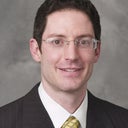I have a trouble breathing that switches nostrils periodically. There is a significant difference between each nostril, almost being unable to breathe out of either nostril. I have read that Turbinate Reduction is a surgery done to correct this, although I've read that this is also normal, being called a Nasal Cycle. My question is how do you know if you need the Turbinate Reduction surgery, or if it is just a normal Nasal Cycle?
Answers (7)
From board-certified doctors and trusted medical professionals
Dr. Daniel J. Givens, MD

Dr. Daniel J. Givens, MD
Board Certified Facial Plastic Surgeon
Answer
Dr. Thomas A. Lamperti, MD

Dr. Thomas A. Lamperti, MD
Board Certified Facial Plastic Surgeon
Answer
Dr. Jason J. Durel, MD
Dr. Jason J. Durel, MD
Board Certified Otolaryngologist
Answer
Dr. Frank Scaccia, MD, FACS
Dr. Frank Scaccia, MD, FACS
Board Certified Facial Plastic Surgeon
Answer
Dr. Kapil Saigal, MD, FACS
Dr. Kapil Saigal, MD, FACS
Board Certified Facial Plastic Surgeon
Answer
Dr. Christopher J. Peers, MD
Dr. Christopher J. Peers, MD
Board Certified Otolaryngologist
Answer
Dr. Mark Loury, MD, FACS (retired)
Dr. Mark Loury, MD, FACS (retired)
Facial Plastic Surgeon, Board Certified in Otolaryngology – Head and Neck Surgery
Answer
More Sinus Surgery Questions
See all Sinus Surgery Q&AWE SEND PRETTY
EMAILS
What’s trending? Who’s turning heads? Which TikTok myths need busting? We’ve got you. No fluff, no gatekeeping—just real talk. Get our free, unfiltered newsletter.